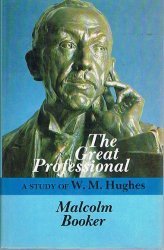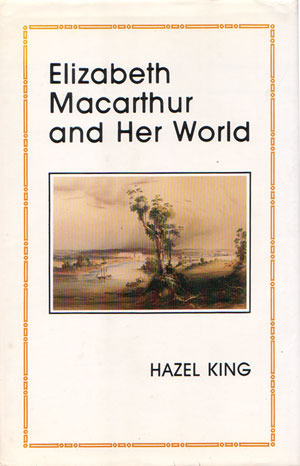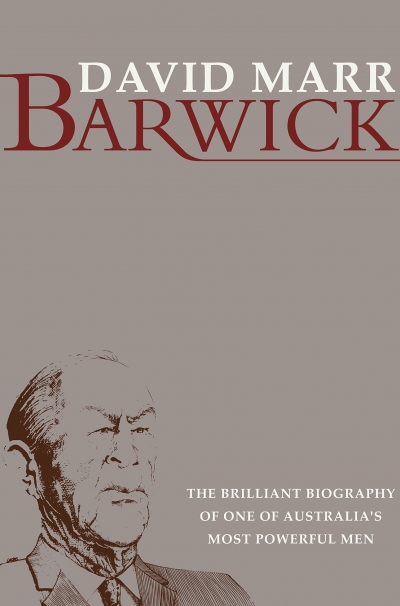Biography
The men of the 2/30th Battalion laughingly enlisted. They didn't laugh on 16 February 1942 when, as part of the 8th Division and the Singapore garrison, they reluctantly surrendered to the Japanese. Happiness being relative, some of these Australians laughed all the way from Changi to a new camp near the wharves. Struggling to load bagged salt, they had no laughter, just helpless sickness in the stomach, as Sergeant Stan Arneil was savagely beaten by guards. Scenes change, states of mind go up and down, until the survivors are about to disembark in Sydney late in 1945: ‘and everybody on the ship is laughing all the time’.
... (read more)Howard Florey: The making of a great scientist by Gwyn Macfarlane
Although Howard Florey spent most of his life abroad, he was a great Australian and according to his biographer probably the most effective medical scientist since Joseph Lister.
... (read more)During his lifetime, Alan Marshall enoyed one of the finest rewards that any country can give to a writer – he knew that his writing had been taken into the hearts of the Australian people. More than four million copies of his books had been sold, and he had been translated into more than forty languages. He had received national, academic and international honours, and had given unstintingly of his time to further the interests of the handicapped and to promote peace and friendship between peoples. Yet he remained a man of the people, able to establish warm relationships with all he met, even those separated from him by the barrier of language, and proud that his stories appealed to readers from all ages and all parts of society.
... (read more)More serious works have been written on the life and times of W.M. Hughes than on any other Australian prime minister and, probably, any Australian at all. The little man got off to a flying start with his own books about himself and his amazing adventures, then Farmer Whyte among others came along and, to cap it off, there has emerged the very lengthy two-volume study of Hughes by L.F. Fitzhardinge, among the best and certainly the most elegant of our political biographies.
... (read more)The Heart of James McAuley: Life and work of the Australian poet by Peter Coleman
This book is a bird of most curious kidney. For the life of me I can’t see any raison d'etre for it. Not that James McAuley, with his wardrobe of fascinating hats, doesn’t cry out for a book, and not that Peter Coleman doesn’t have so many of the qualifications to write that book. But this work is not it. It’s thin, to the point of emaciation. It appears exactly four years after McAuley’s death, which, as literary biographies go, is but a day. Which puts me in mind of an Entebbe Raid or Teheran Hostages book, hitting the market while the event is still fresh. But McAuley’s career, for all its interest, lacks that brand of newsworthiness. And a book with so comprehensive a title as The Heart of James McAuley: Life and Work of the Australian Poet presumably aims to be more than a piece of ephemera.
... (read more)Elizabeth Macarthur and Her World by Hazel King & Land of a Thousand Sorrows by F. Murray Greenwood
The daughter of a prosperous-enough middle-class farming family in Devon, Elizabeth Veale received an upbringing and an education that stood her in good stead during her long existence in New South Wales as Mrs. John Macarthur.
... (read more)Hamish McDonald has provided us with the first biography of President Suharto since O.G. Roeder’s authorized work which appeared in 1969. It is not only much more critical, but more comprehensive, and, as much of this second book deals with the events of the last few years, it can be said to be about a different Indonesia and a different President Suharto.
... (read more)Sir Samuel Griffith was chief justice of the High Court of Australia for sixteen years, from October 1903 to October 1919; but he had effectively retired in July 1919. Sir John Latham was chief justice for sixteen and a half years, from October 1935 to April 1952; but he had effectively retired in May 1951. Thus, Sir Garfield Barwick, who last month completed his sixteenth year as chief justice, has already established a record for active service in the position; if he remains in office until 24 October this year, he will have broken even Lathams formal record.
The holder of such a record term of office as chief justice would, on that ground alone, be assured of a unique place in Australian legal history; but in Barwick’s case, the years as chief justice are only a climax – perhaps even an anti-climax – to an extraordinary career.
... (read more)The Australian Dictionary of Biography Vol 7 1891–1939, A–Ch edited by Bede Nairn and Geoffrey Serle
Australian Writers: An illustrated guide to their lives and work by Graeme Kinross-Smith
Normally, Australia’s Writers could be expected to attract the special attention of critics. However, by sensible use of his preface and the quality of his book’s contents, Graeme Kinross Smith has minimised the possibility of adverse comment. Carefully, he sets out the guidelines adopted for the fiftyfour essays that range from two to ten pages each, starting with Captain Arthur Phillip and closing with Rosemary Dobson. Stressing ‘the distinctive and fascinating’ tradition of Australian literature and the book’s purpose in giving an insight into that tradition, Graeme Kinross Smith writes:
... (read more)









